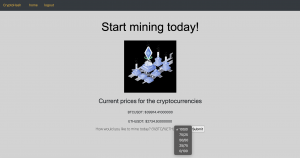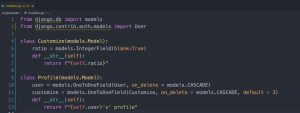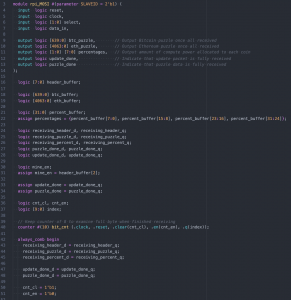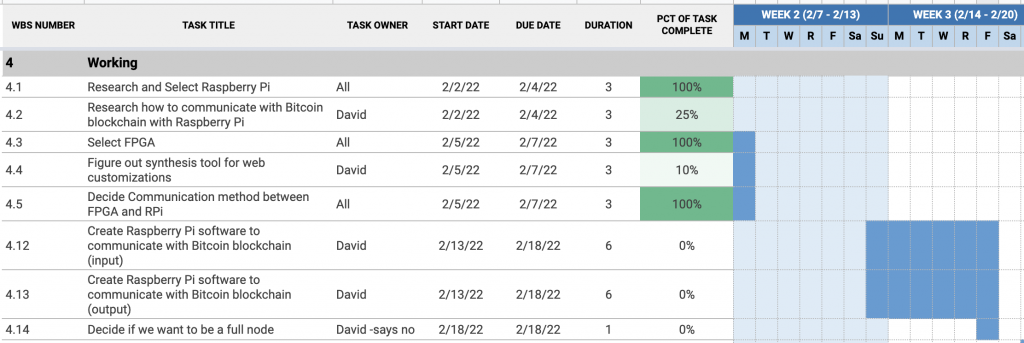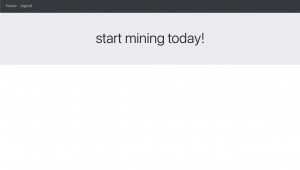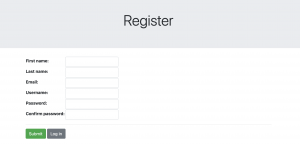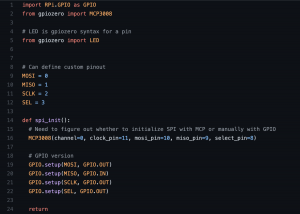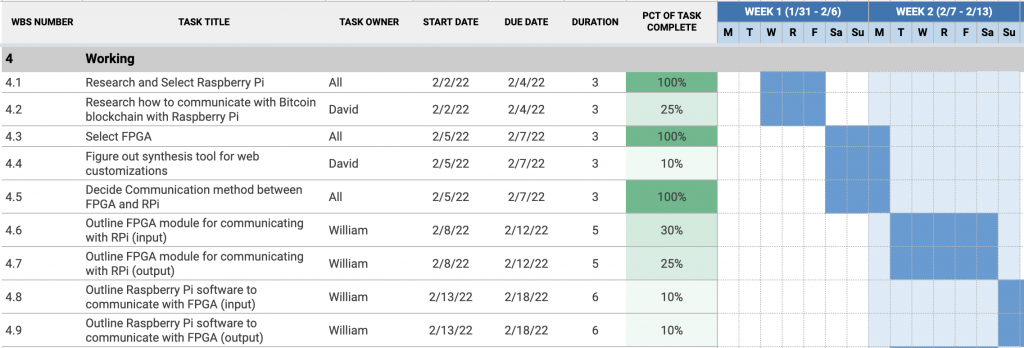The unavailability of our Raspberry Pi continues to plague us. We have received our Pi Wedge, but we continue to not hear back about the Raspberry Pi. In an attempt to mitigate this risk, we are trying to enter into the Hackberry Pi hackathon in an attempt to get a RPI from that. The largest blocker in testing mining locally has largely been solved through the discovery of a stratum mining proxy that can effectively bridge the HTTP and stratum protocols for mining. Now, to create our RPI communication protocol with mining pools, we just need to research how other established miners such as cpuminer-multi and bfgminer connect to pools. The only potential risk here is that the stratum mining proxy does require sudo access so the computers in the lab room may not suffice.
We continue to work on the FPGA modules controlling both the communication and hashing. The communication part of the system is now able to store the input Bitcoin/Ethereum puzzles and replace them with new puzzles if needed. These puzzles are recreated on the FPGA through a single bitstream sent by the Raspberry Pi. One of the risks in this method is that a cryptocurrency with a large puzzle size may take up too much hardware area on our FPGA. This would limit the amount of area available for hashing. We are researching ways to cut down on the puzzle input size and only send the necessary information.



